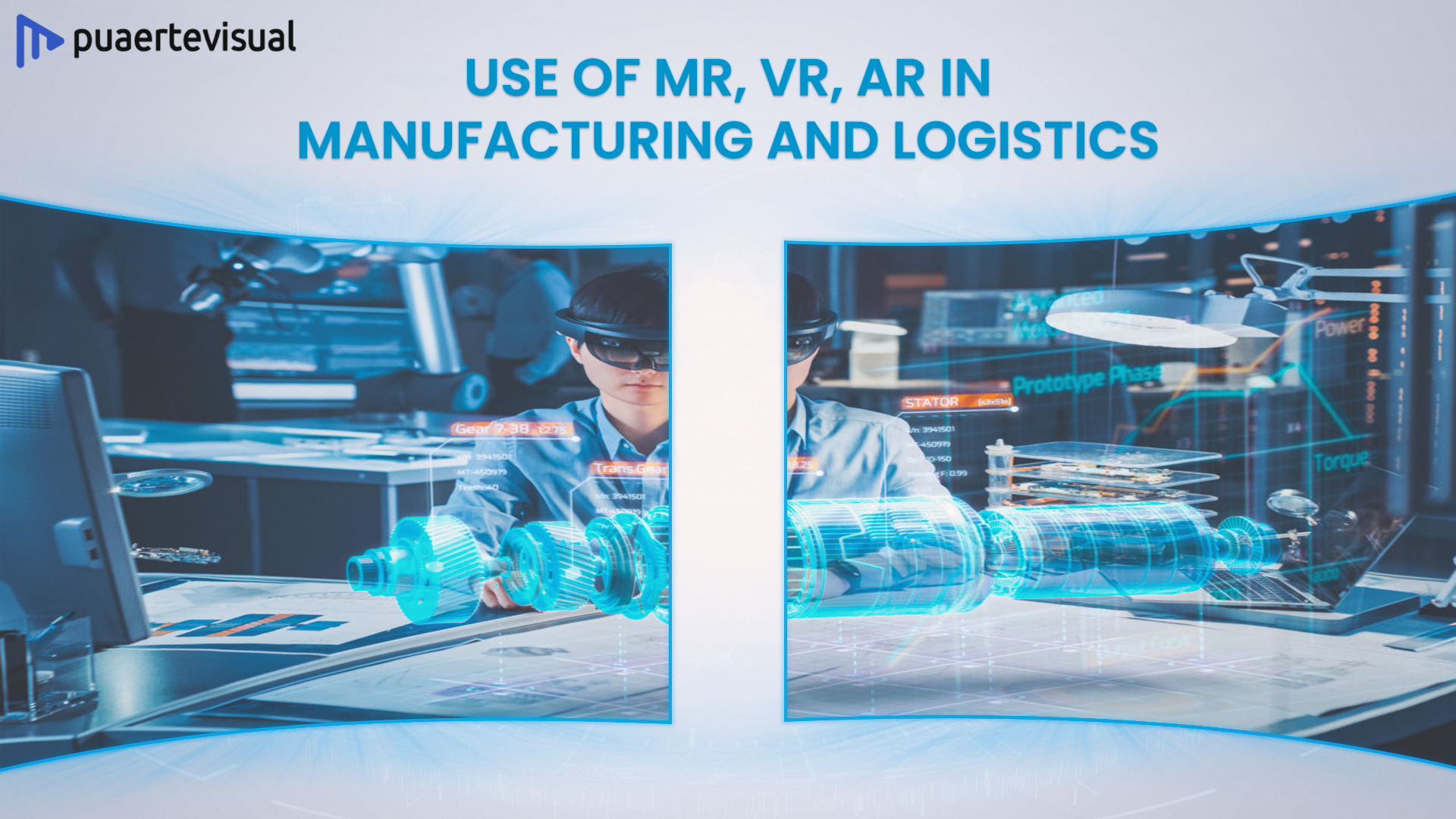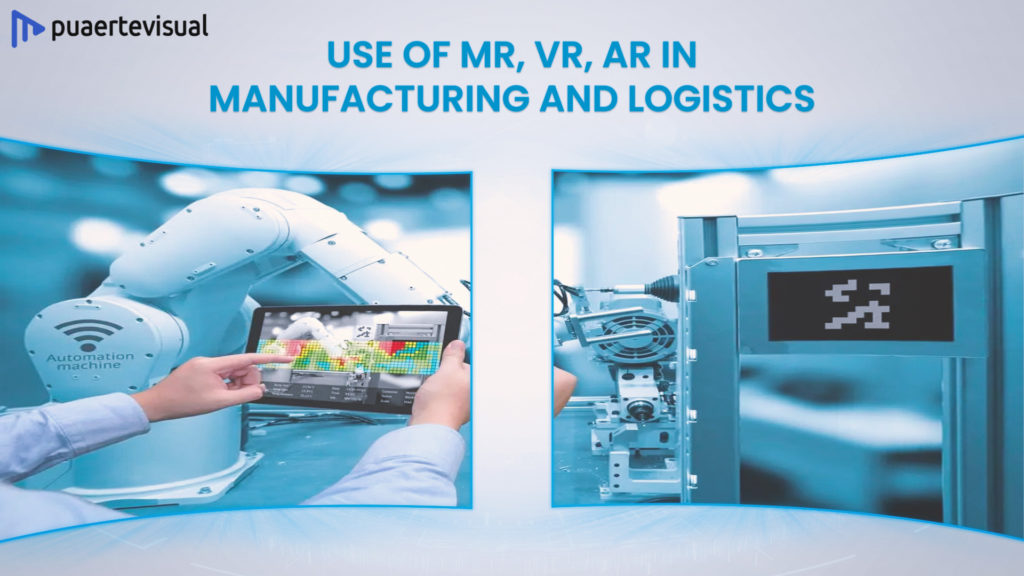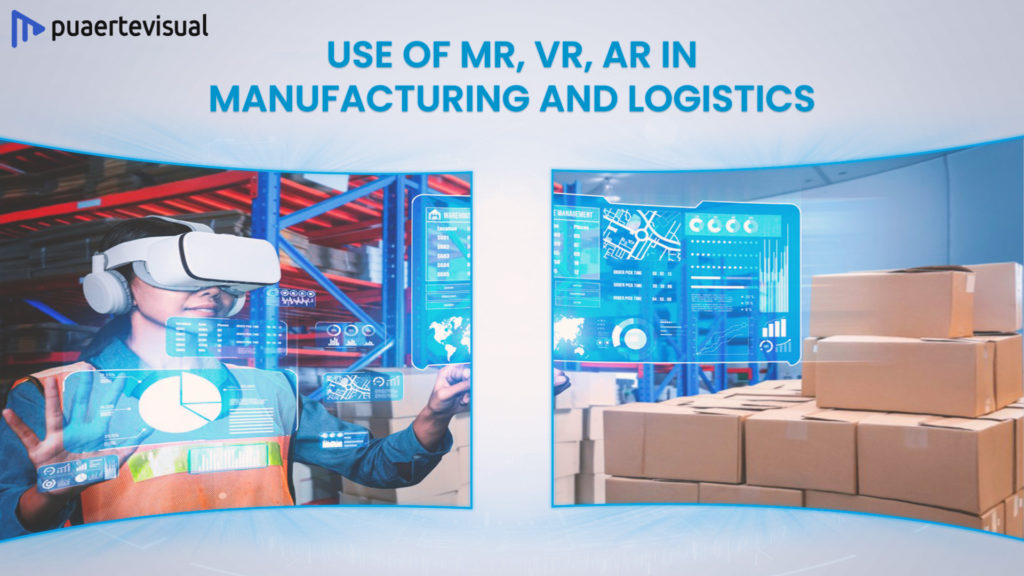
Manufacturers and logistics professionals are always looking for ways to improve efficiency and cut costs. In recent years, there has been a surge in the use of MR, VR, and AR technologies in these industries. While some companies are still on the fence about whether or not to invest in these technologies, others have seen great benefits from their implementation.
In this post, we’ll take a look at how MR, VR, and AR are being used in manufacturing and logistics and discuss the benefits of these technologies. We’ll also explore some potential applications for MR, VR, and AR in these industries.
What Are MR, VR, And AR?
Before diving into how MR, VR, and AR in Manufacturing and Logistics sector have revolutionized the industry, it’s important to understand what these terms mean and how they work.
AR – Augmented Reality. This technology overlays digital, computer-generated information onto the real-world environment. Users can view the digital information as a text or graphic overlay on their surroundings.
VR – Virtual Reality. In virtual reality, the user immerses in a fully computer-generated environment. Users can interact with the environment and control their own viewpoint within it.
MR – Mixed Reality. This is a combination of AR and VR technologies. In this, both the user’s real-world environment and the virtual world blends together. Users can interact with both environments while also being able to determine how much of each one they see.
How Are MR, VR, and AR Used in Manufacturing and Logistics?

Manufacturers and logistics companies use each of these technologies in different ways. Let’s take a look at some of them.
1) Real-Time Employee Training
Manufacturers and logistics companies often rely on large workforces to function. When employees need to be trained in a particular process, it can be difficult and expensive to bring them all to a centralized training facility. This is an even bigger problem when employees need to be retrained after they’ve been laid off and then rehired.
MR, VR, and AR technologies trains employees in a real-time environment from anywhere with an internet connection. This can significantly reduce training costs, as employees no longer need to be brought into a facility for hours at a time. It also allows manufacturers and logistics companies to train employees in just a few days rather than several weeks.
2) Inspecting And Troubleshooting Complex Equipment
In some manufacturing and logistics companies, large equipment can cost millions of dollars. This equipment must be regularly inspected to ensure that it’s working correctly and will continue to operate for years without issue.
MR, VR, and AR technologies can be used in this situation to allow technicians to inspect complex equipment from the comfort of a remote location. The technician can view real-time information and augmented data about the equipment’s condition, allowing them to quickly identify any issues that may arise.
3) Visualizing And Simulating Customer Situations
MR, VR technology helps manufacturers and logistics workers visualize and simulate customer situations. For example, a manufacturer may wish to design a product that offers the best possible customer experience. They may be able to use a VR simulation of the product in action to help them design an optimal user experience.
AR also helps in these scenarios. For example, a customer may be interacting with a product and a faulty part could cause it to break. AR can be used to overlay details about the part so that it can be quickly identified, potentially preventing an issue before it becomes a problem.
4) Optimize Delivery Routes And Reduce Transportation Costs
MR, VR, and AR in Manufacturing and Logistics help to map out customer routes. This reduces transportation costs and optimizes delivery routes. For example, a truck transporting materials may have to make several stops along the way. This increases the total mileage of the trip, which can result in higher transportation costs for the manufacturer or logistics company.
By using MR, VR, and AR technology, drivers can see their entire route mapped out – potentially with a shorter, more efficient path – along with details about each stop.
Real-Life Examples Of MR, VR, and AR In Manufacturing And Logistics

You might be thinking – “All these uses sound good on paper. But how practical are they in real life?”. We have the answers for you. MR, VR, and AR in Manufacturing and Logistics have already been implemented by many famous multi-national companies around the world. These companies have found great success too! Let’s take a look at some examples.
Amazon
As you know, Amazon is one of the largest e-commerce companies. They have warehouses and logistics partners all around the world. In an effort to streamline their process and increase efficiency, Amazon has implemented MR, VR, and AR in their day-to-day operations.
Their manufacturing and logistics process is highly reliant on these three technologies. Their warehouse associates use MR, VR, and AR for training purposes. Managers are also able to inspect warehouses remotely thus saving a lot of time and money for the company.
DHL
DHL is another famous company that has implemented MR, VR, and AR into all aspects of their manufacturing and logistics process. They have worked to develop a remote training program for their headquarter employees. Because of this, employees can now do their jobs from anywhere in the world as this virtual reality training simulates real-life scenarios.
DHL was also able to greatly minimize their expenses because of these technologies. Their employees are equipped with functional AR glasses that allow them to easily locate, track, and identify shipments. These glasses also allow employees to seamlessly communicate with one another.
Conclusion
As you can see, MR, VR, and AR in Manufacturing and Logistics have already created a major impact. In a rapidly advancing world, it’s only a matter of time before these technologies become commonplace in all manufacturing and logistics operations.
If you would like to know more about this exciting new development, make sure to check out our blog for more interesting posts!

Comments are closed.